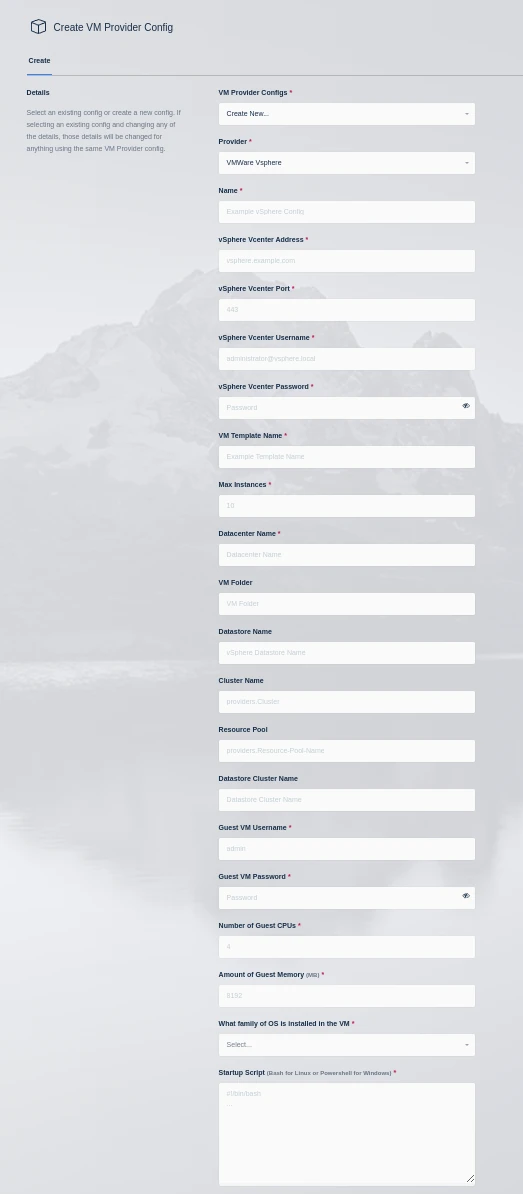
vSphere VM Provider
Setting |
Description |
|---|---|
Name |
An identifying name for this provider configuration. |
vSphere vCenter Address |
The IP or FQDN of the VMware vSphere vCenter server to use. |
vSphere vCenter Port |
The management port of your Vcenter instance (typically 443) |
vSphere vCenter Username |
The username to use when authenticating with the vSphere vCenter server (e.g kasm-autoscale) |
vSphere vCenter Password |
The password to use when authenticating with the vSphere vCenter server. |
VM Template Name |
The name of the template VM to use when cloning new autoscaled VMs. |
Max Instances |
The maximum number of vSphere VM instances to provision regardless of the need for available free slots. |
Datacenter Name |
The datacenter to use for cloning the new vSphere VM instances. |
VM Folder |
The VM folder to use for cloning the new vSphere VM instances. This field is optional, if left blank the VM folder of the template is used. |
Datastore Name |
The datastore to use for cloning the new vSphere VM instances. This field is optional, if left blank the datastore of the template is used. |
Cluster Name |
The cluster to use for cloning the new vSphere VM instances. This field is optional, if left blank the cluster of the template is used. |
Resource Pool |
The resource pool to use for cloning the new vSphere VM instances. This field is optional, if left blank the resource pool of the template is used. |
Datastore Cluster Name |
The datastore cluster to use for cloning the new vSphere VM instances. This field is optional, if left blank the datastore cluster of the template is used. |
Guest VM Username |
The username to use for running the startup script on the new vSphere VM instance. This account should have sufficient privileges to execute all commands in the startup script. |
Guest VM Password |
The password for the Guest VM Username account. |
Number of Guest CPUs |
The number of CPUs to configure on new vSphere VM instances. This option is not dependent on the number of CPUs configured on the template. |
Amount of Guest Memory(GiB) |
The amount of memory in GibiBytes to configure on new vSphere VM instances. This option is not dependent on the amount of memory configured on the template. |
What family of OS is installed in the VM |
Whether the template OS is Linux or Windows. This is needed to ensure proper execution of the startup script. |
Startup Script |
When instances are provisioned, this script is executed and is responsible for installing and configuring the Kasm Agent. Scripts are run as bash scripts on a Linux host and Powershell scripts on a Windows host. Example scripts are available on our GitHub repository Additional troublshooting steps can be found in the Creating Templates For Use With The VMware vSphere Provider section of the server documentation. |